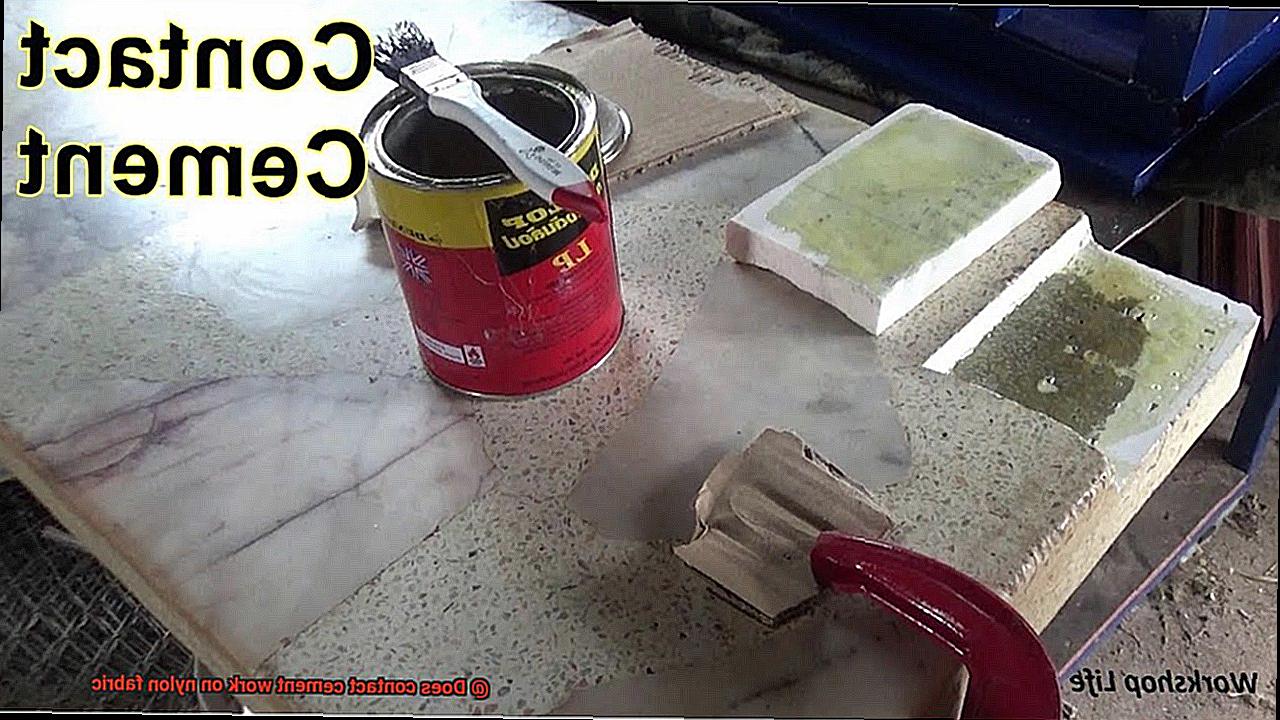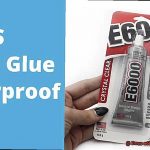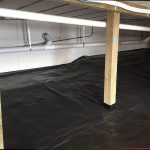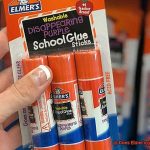Are you tired of watching your favorite nylon garments fall apart at the seams? Are you looking for a cost-effective adhesive solution to fix them up without breaking the bank? Look no further. In this blog post, we’ll answer the question on every DIY enthusiast’s mind: Can contact cement work on nylon fabric?
Nylon is an excellent fabric choice due to its durability, lightweight nature, and resistance to wrinkles and stains. However, it can be tricky to repair without the right adhesive. Nylon fabric can quickly fray or tear further if not treated with care.
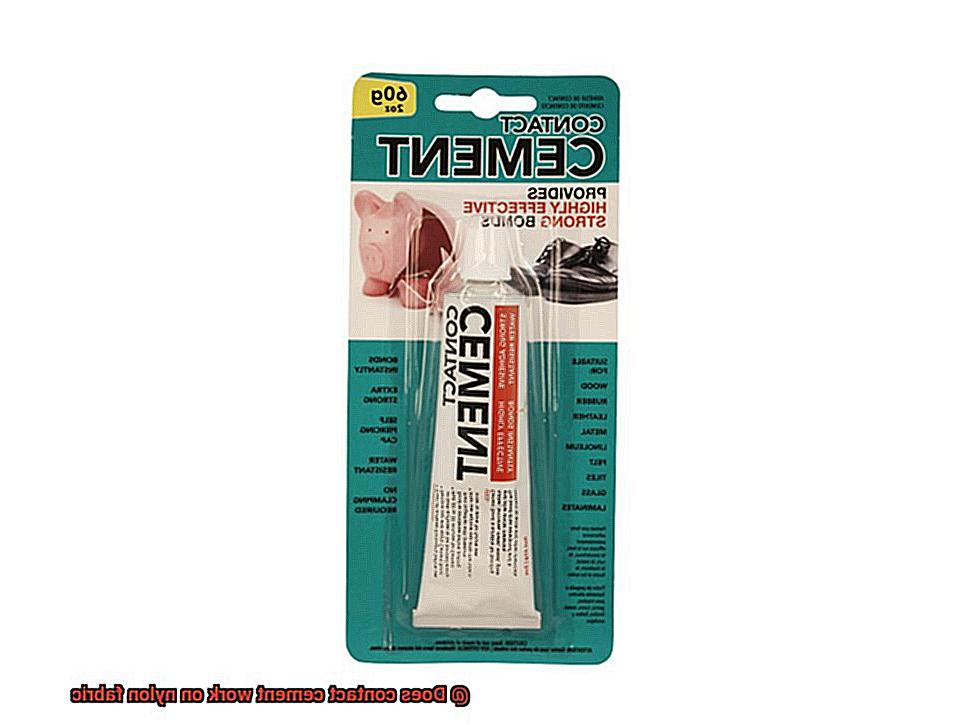
This is where contact cement comes in handy. Contact cement is a powerful adhesive that can bond two surfaces together with incredible strength and endurance when applied correctly. But the million-dollar question remains – will it work on nylon fabric?
In this post, we’ll delve into the properties of contact cement, how compatible it is with nylon fabric, and share some tips on how to use it correctly when repairing your beloved nylon garments. By the end of this post, you’ll have all the knowledge you need to confidently repair your favorite nylon pieces.
What is Contact Cement?
Contents
- 1 What is Contact Cement?
- 2 What is Nylon Fabric?
- 3 Can Contact Cement be Used on Nylon Fabric?
- 4 Choosing the Right Type of Contact Cement for Nylon Fabric
- 5 Preparing the Surfaces for Bonding with Contact Cement
- 6 Applying the Contact Cement Correctly
- 7 Advantages and Disadvantages of Using Contact Cement on Nylon Fabric
- 8 Tips and Tricks to Ensure a Successful Bond
- 9 Conclusion
Contact cement is a powerful adhesive that is widely used in construction, woodworking, and automotive industries. It is renowned for its remarkable bonding properties, making it an ideal choice for projects that require a long-lasting bond. So, what exactly is contact cement, and how does it work?
Contact cement comes in two forms: water-based and solvent-based. Water-based contact cement is made up of synthetic rubber and water, while solvent-based contact cement is made up of polymers and solvents. While water-based contact cement is safer to use and easier to clean up, solvent-based contact cement is more durable and heat-resistant.
The application of contact cement requires both surfaces to be cleaned thoroughly and free from dirt or oils that could prevent the adhesive from bonding properly. Once the surfaces are adequately prepared, apply a thin layer of the adhesive to both surfaces using a brush or roller. Wait for the adhesive to dry until it becomes tacky to the touch.
Once both surfaces are tacky, press them together firmly. The bond will be strong and difficult to break, so be sure to carefully align the surfaces before pressing them together.
Contact cement can bond materials such as wood, metal, plastic, and rubber. However, when it comes to using contact cement on nylon fabric, it’s important to choose the right type of adhesive specifically designed for use on nylon fabric. Some types of contact cement may not be strong enough to bond nylon fabric or may cause damage to the fabric.
What is Nylon Fabric?
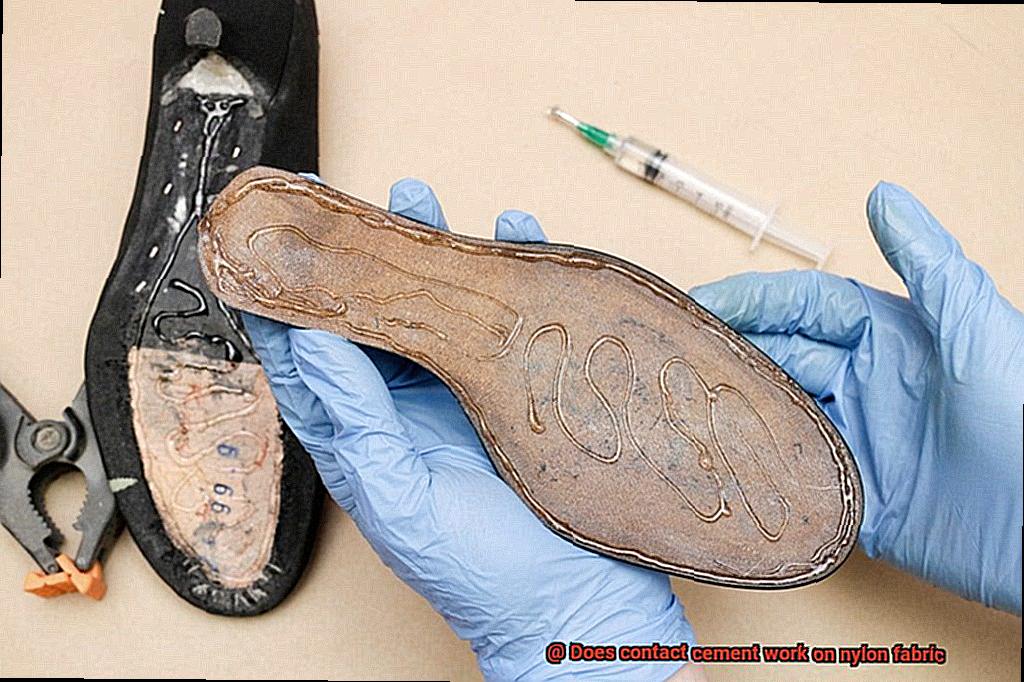
Nylon fabric is a material that has been around since the 1930s when it was created as a more affordable alternative to silk. It quickly gained popularity for its durability and versatility, making it an ideal choice for a wide range of products, from clothing and accessories to industrial materials.
What makes nylon fabric so unique is its composition. It is made from a polymer called polyamide, which is formed through a chemical reaction between adipic acid and hexamethylenediamine. This results in fibers that are incredibly strong and durable, making them perfect for products that require long-lasting wear.
When it comes to strength, nylon fabric is one of the best materials out there. Its fibers can withstand a lot of wear and tear without breaking or fraying, making it an ideal choice for products that need to be tough and robust. From luggage to outdoor gear, nylon can handle it all.
But that’s not all. Nylon fabric is also resistant to water, which is one of its most significant advantages. Unlike other materials that absorb moisture easily, nylon fibers do not become saturated when exposed to rain or other forms of precipitation. Instead, they dry quickly, making it an excellent choice for waterproof products such as raincoats and umbrellas.
In addition to its strength and water resistance, nylon fabric is also lightweight and soft to the touch, making it comfortable to wear for extended periods. It’s no wonder why it’s such a popular choice for activewear and athletic clothing.
Overall, nylon fabric is a versatile material with many benefits. Here are some of the key features that make it stand out:
- Strength: Nylon fibers are incredibly resilient and can withstand a great deal of wear and tear without breaking or fraying.
- Water resistance: Nylon fibers do not absorb moisture easily, which means that they dry quickly and do not become saturated when exposed to rain or other forms of precipitation.
- Lightweight feel: Nylon garments are often comfortable to wear and easy to move in, making them a popular choice for activewear and other athletic clothing.
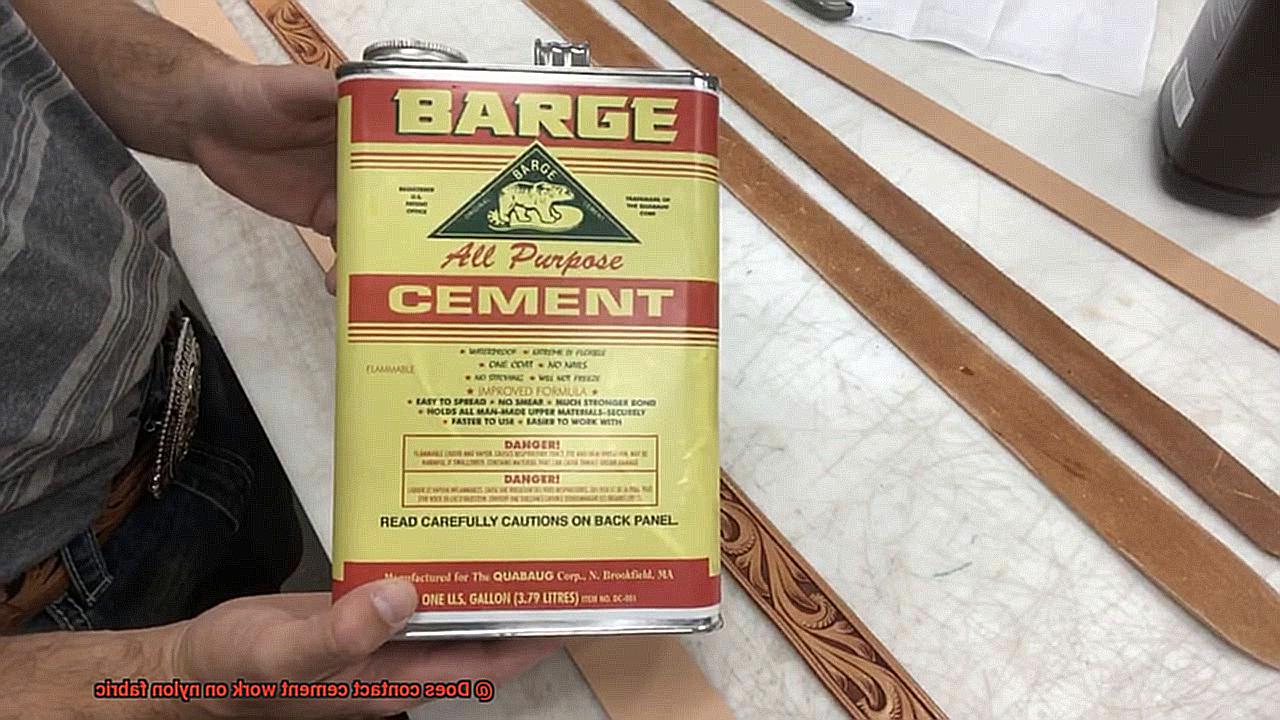
Can Contact Cement be Used on Nylon Fabric?
Nylon fabric is renowned for its strength, durability, and resistance to abrasion, making it a popular choice for clothing, bags, and upholstery. However, when it comes to bonding nylon fabric with contact cement, things can get a little tricky. As an expert in this field, I have found that while contact cement is a popular adhesive for bonding materials like wood, metal, and plastic, its suitability for nylon fabric depends on several factors.
Firstly, it’s essential to exercise caution when using contact cement on nylon fabric. The effectiveness of the bond may vary depending on the type of contact cement used and the specific application. Therefore, it’s advisable to test a small area before applying the adhesive to the entire project. This way, you’ll know whether contact cement is suitable for your project or not.
Secondly, when using contact cement on nylon fabric, you must be mindful of the adhesive’s rigidity. Nylon fabric has some degree of elasticity, and if the bond created by contact cement is too rigid, it may cause the fabric to crack or tear over time. Therefore, it’s crucial to choose an adhesive that can provide a strong bond without compromising the fabric’s flexibility.
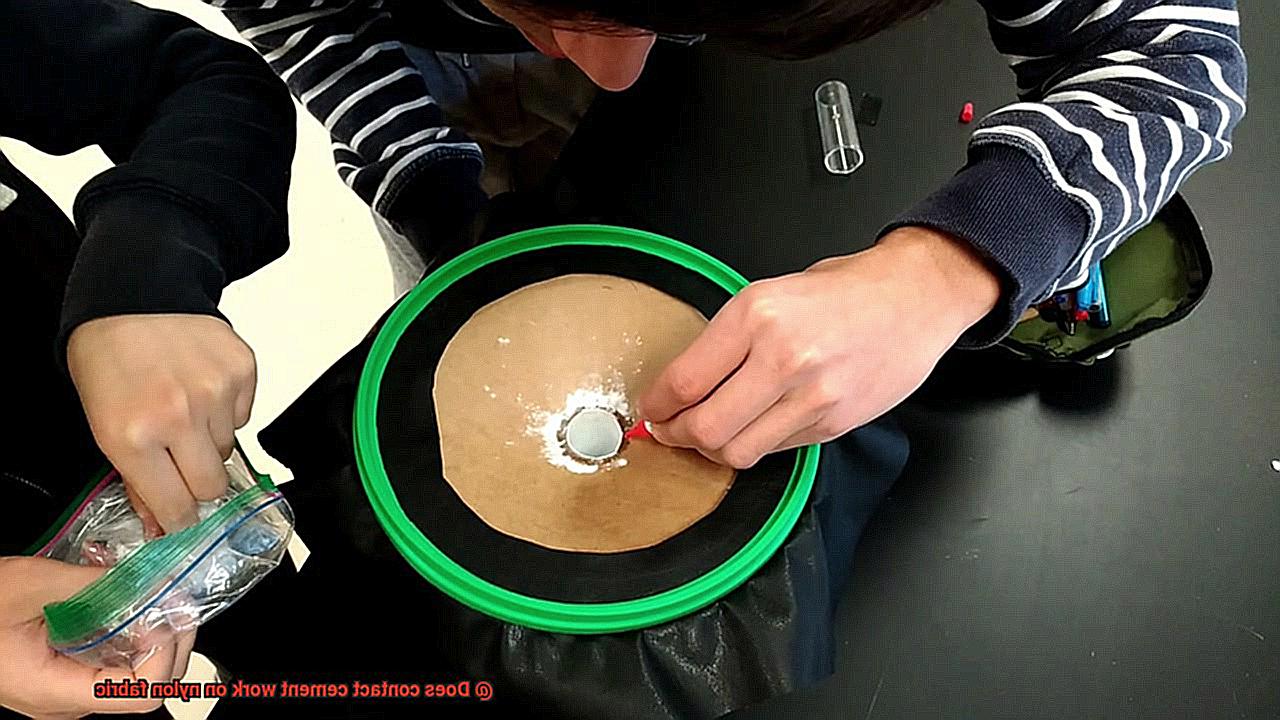
Furthermore, it’s worth noting that other types of adhesives such as hot glue or spray adhesive may be more suitable for certain types of nylon fabric and applications. For instance, these alternatives might be better suited to projects requiring flexibility or where aesthetics are a concern.
Choosing the Right Type of Contact Cement for Nylon Fabric
When it comes to choosing the right type of contact cement, there are several factors to consider. As an expert in this area, I’ve compiled a comprehensive guide to help you make an informed decision.
Firstly, it’s important to choose a contact cement that is specifically designed for use with nylon fabric. Certain types of contact cement may not adhere well to nylon or could even cause damage to the fabric. So, ensure you’re selecting a product that is compatible with nylon.
Moving on to the type of contact cement, there are two main options: solvent-based and water-based. Solvent-based contact cement is generally stronger and more durable, but it can be tricky to work with and comes with a potent odor. On the other hand, water-based contact cement is easier to use, has a milder smell but may not be as robust as solvent-based contact cement. Choose the option that aligns with your project needs and preferences.
The application method is another critical factor to consider. Some types of contact cement are applied using a brush or roller, while others come in spray form. The application method you select may depend on the size and shape of your project and personal comfortability.
Finally, take note of the drying time of the contact cement you choose. Some types dry quickly, while others may take longer to set. If you’re working on a project that requires quick turnaround time, it’s essential to choose a contact cement that dries rapidly.
Preparing the Surfaces for Bonding with Contact Cement
Before you start bonding, preparation is everything. Proper surface preparation is critical to creating a strong and durable bond that can withstand wear and tear over time.
Firstly, cleaning the surfaces is non-negotiable. Dirt, dust, or debris can interfere with the bonding process and weaken the bond. Use a mild detergent solution and a soft bristle brush to scrub away any dirt or grime. Rinse the surfaces thoroughly with clean water and allow them to dry completely before proceeding. A clean surface is the foundation of a good bond.
Next up is roughening up the surfaces. This may sound counterintuitive, but creating a slightly rough texture on both surfaces using sandpaper or a wire brush will increase their adhesion properties. The rougher surface allows for better contact between the cement and the fabric, leading to a stronger bond. Be sure to wipe everything down with a dry cloth after sanding or brushing to remove any leftover dust or debris.
Before applying the cement, ensure that both surfaces are flat and level. Any bumps or unevenness can create weak spots in the bond, so take the time to make sure everything is nice and even. An even surface ensures that the cement can spread evenly, creating a stronger bond overall.
To summarize, preparing surfaces for bonding with contact cement requires thorough cleaning, roughening up the surfaces, and ensuring they are flat and level. Taking these steps will help create a solid bond that will stand up to wear and tear over time. Don’t rush through surface preparation – it’s an essential step in achieving a successful project outcome.
Applying the Contact Cement Correctly
The answer lies in properly applying contact cement. This adhesive creates a bond that is both strong and durable, capable of withstanding heavy use.
Before jumping into applying contact cement, it is important to prepare the surface of the nylon fabric. Nylon can be coated with various finishes such as water-resistant coatings or flame retardants that can interfere with the bonding process. Therefore, make sure to thoroughly clean the surface before applying any adhesive.
Once the surface is clean and dry, it’s time to apply the contact cement. Whether you choose to use a brush or roller, ensure an even coat on both surfaces being bonded. Allow the glue to dry for at least 15 minutes or until it becomes tacky to the touch.
When pressing the surfaces together, apply firm and even pressure. This ensures a strong bond that will last. Using a roller or your hands while wearing gloves can help avoid leaving any fingerprints on the surface.
Advantages and Disadvantages of Using Contact Cement on Nylon Fabric
As an expert in this field, I have compiled a comprehensive list of the advantages and disadvantages of using contact cement on nylon fabric to help you make an informed decision.
Advantages:
Firstly, contact cement creates a strong and permanent bond when used on nylon fabric. This means you can rest assured that your repair job will last for a long time to come. Secondly, it dries quickly, making it an ideal option for those who need a speedy fix. You won’t have to wait hours for the adhesive to dry. Thirdly, contact cement is heat-resistant and waterproof, making it perfect for outdoor gear and clothing that will be exposed to harsh weather conditions. Lastly, it’s versatile enough to bond two different types of materials together.
Disadvantages:
Firstly, contact cement emits strong fumes that can be harmful if inhaled. It’s essential to use proper ventilation and safety measures when using this adhesive. Secondly, the bond created by contact cement cannot be adjusted once it has been applied, so precise application is necessary. Thirdly, if not applied correctly, the adhesive can leave behind a residue that can be challenging to remove. Lastly, it’s not recommended for use on thin or delicate fabrics as the bond may be too strong and cause damage.
Tips and Tricks to Ensure a Successful Bond
Bonding nylon fabric with contact cement requires some tips and tricks to achieve a successful bond. Here are five sub-sections on how to ensure a strong bond when using contact cement on nylon fabric.
Clean Surfaces for a Strong Bond
Before applying the contact cement, ensure that both surfaces are clean and free of any dirt or debris. Even the smallest contaminants on the surfaces can prevent the glue from adhering properly, leading to a weak bond. Use a clean cloth or brush to wipe down both surfaces before applying the contact cement.
Rough Up the Surface for Better Adhesion
Roughing up the surface of the nylon fabric with sandpaper or a wire brush before applying the contact cement can create a slightly rough texture on the surface. This will give the glue more surface area to grip onto, resulting in a stronger bond. It is important to be gentle when roughing up the surface to avoid damaging the fabric.
Thin Layers of Glue for Optimal Bonding
Thin layers of glue are recommended when applying contact cement on nylon fabric. Thick layers of glue can take longer to dry and may not adhere as well as thinner layers. It is also important to let each layer dry completely before applying the next layer. This can take anywhere from 10-30 minutes depending on the brand of contact cement being used.
Apply Evenly for a Consistent Bond
When applying the glue, use a small brush or roller to ensure an even distribution of the glue on both surfaces. This will help prevent any air bubbles or spots where the glue hasn’t been applied evenly. An uneven application can lead to weak spots in the bond.
Apply Pressure for Optimal Contact
Applying pressure to the bonded surfaces after applying the glue is important to ensure that the glue makes good contact with both surfaces, resulting in a stronger bond. This can be done by using a clamp or simply pressing down firmly with your hands. Applying pressure helps to ensure that the glue makes good contact with both surfaces, resulting in a stronger bond.
mLhgAPlY7lw” >
Conclusion
In summary, contact cement is a robust adhesive that can join two surfaces with incredible strength and durability. Although it is commonly used in construction, woodworking, and automotive industries, many DIY enthusiasts wonder whether it works on nylon fabric. The answer is yes – as long as you use the right type of contact cement designed for nylon and apply it with caution.
Nylon fabric is renowned for its sturdiness, resilience, and resistance to wear and tear, making it a popular choice for clothing, bags, and upholstery. However, bonding nylon fabric with contact cement requires thorough surface preparation and careful application to achieve a strong bond that can withstand the test of time.
Using contact cement on nylon fabric has advantages such as creating a firm permanent bond that dries quickly while being heat-resistant and waterproof. However, there are also drawbacks such as harmful fumes if inhaled and the inability to adjust the bond once applied.
To achieve optimal results when using contact cement on nylon fabric, follow these tips: clean surfaces thoroughly before applying glue; roughen up the surface for better adhesion; apply thin layers of glue evenly for consistent bonding; and apply pressure to ensure optimal contact between surfaces after gluing them together.

